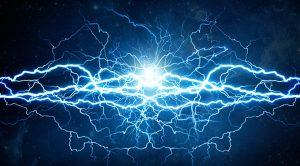 Looking for ways to make your home an energy efficient space? Here are six affordable ways to cut the costs of your energy bills while overall reducing your carbon footprint. As a homeowner, you may be wondering how your electric bill costs what it does. Nearly half of your annual energy consumption comes from space heating and air conditioning inside your home. Lighting and refrigeration add to these costs as well. Of course, energy is also used in homes for any activities you and your family do that involve electronics, such as televisions, computers, appliances, and various other gadgets. These actions listed below will help you to manage your household routine better than before.
Looking for ways to make your home an energy efficient space? Here are six affordable ways to cut the costs of your energy bills while overall reducing your carbon footprint. As a homeowner, you may be wondering how your electric bill costs what it does. Nearly half of your annual energy consumption comes from space heating and air conditioning inside your home. Lighting and refrigeration add to these costs as well. Of course, energy is also used in homes for any activities you and your family do that involve electronics, such as televisions, computers, appliances, and various other gadgets. These actions listed below will help you to manage your household routine better than before.
1. Install LED Lights
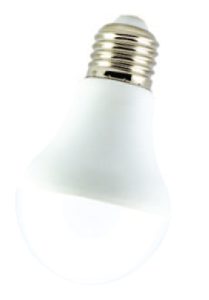 LED lights are considered one of the most energy efficient forms of lighting. They last longer and use nearly 75% less energy than standard lightbulbs. LED bulbs by design give off light to a specific area. Other types of lighting require reflectors or diffusers to help brighten desired spots. LEDs offer variation in light color and directionality to work best for your home. These lights are great for designated workspaces, such as a desk in your office area or a reading nook. They also help to brighten dimmer areas, like above the countertops in your kitchen to make it easier to see when you are cooking and reading recipes. In addition, LEDs give off little heat compared to that of an incandescent bulb, helping your home to stay cooler.
LED lights are considered one of the most energy efficient forms of lighting. They last longer and use nearly 75% less energy than standard lightbulbs. LED bulbs by design give off light to a specific area. Other types of lighting require reflectors or diffusers to help brighten desired spots. LEDs offer variation in light color and directionality to work best for your home. These lights are great for designated workspaces, such as a desk in your office area or a reading nook. They also help to brighten dimmer areas, like above the countertops in your kitchen to make it easier to see when you are cooking and reading recipes. In addition, LEDs give off little heat compared to that of an incandescent bulb, helping your home to stay cooler.
2. Add Insulation to Your Home
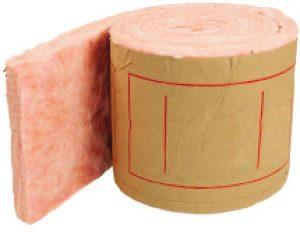 The amount of insulation inside your home is another important aspect to consider when creating a more energy efficient space. Insulation is created from bulky fiber materials, such as fiberglass, wool, and other natural fibers. It helps to reduce the exchange of heat in areas like your roof, attic, and air ducts. After working with a professional to assess how much insulation is needed to make your home the most efficient, you have the potential to see it all pay off. It is suggested that adding insulation can save homeowners up to 15% off their annual heating and cooling costs. When correctly installed, insulation also offers other benefits, such as noise reduction, pest control, and humidity regulation.
The amount of insulation inside your home is another important aspect to consider when creating a more energy efficient space. Insulation is created from bulky fiber materials, such as fiberglass, wool, and other natural fibers. It helps to reduce the exchange of heat in areas like your roof, attic, and air ducts. After working with a professional to assess how much insulation is needed to make your home the most efficient, you have the potential to see it all pay off. It is suggested that adding insulation can save homeowners up to 15% off their annual heating and cooling costs. When correctly installed, insulation also offers other benefits, such as noise reduction, pest control, and humidity regulation.
3. Have Smart Power Strips
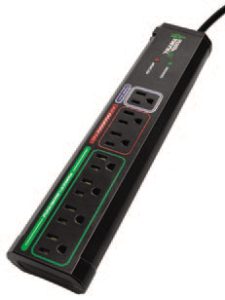 Power strips, also known as power boards, are convenient items to have inside your home. They have several AC ports and USB outlets so that you can charge multiple electronic devices for audio and video, appliances, gaming systems, and more. You can keep everything charged and running smoothly whether you are in an office area or relaxing in bed. An important thing to consider about traditional power strips is that even if devices are not plugged in or turned on, electricity is still being used. This is where smart power strips make a difference in money and efficiency. Smart power strips detect the level of electricity each device is using and help to reduce any extra running power. This technology makes energy conservation a main priority.
Power strips, also known as power boards, are convenient items to have inside your home. They have several AC ports and USB outlets so that you can charge multiple electronic devices for audio and video, appliances, gaming systems, and more. You can keep everything charged and running smoothly whether you are in an office area or relaxing in bed. An important thing to consider about traditional power strips is that even if devices are not plugged in or turned on, electricity is still being used. This is where smart power strips make a difference in money and efficiency. Smart power strips detect the level of electricity each device is using and help to reduce any extra running power. This technology makes energy conservation a main priority.
4. Soak Up the Sun
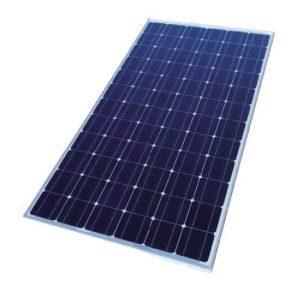 In Florida, the sun is a reliable source of energy. With many sunny days throughout the year, keep your home a comfortable temperature by opening the windows. Especially during the summer and spring seasons, the flow of fresh air can boost everybody’s mood in the house. You can also use the sun to help with basic tasks, such as laundry. Make it a family activity to hang up an affordable clothesline to help dry everyone’s clothes after they are washed. When relying on this natural source of energy, professionals recommend that you keep your air conditioner running. When it is kept on, there is less chance for mildew or mold to grow, as these units help to regulate the amount of humidity in the air. You can still easily save money by choosing to keep your air conditioner at a consistent temperature. Also consider the installation of solar panels by professionals.
In Florida, the sun is a reliable source of energy. With many sunny days throughout the year, keep your home a comfortable temperature by opening the windows. Especially during the summer and spring seasons, the flow of fresh air can boost everybody’s mood in the house. You can also use the sun to help with basic tasks, such as laundry. Make it a family activity to hang up an affordable clothesline to help dry everyone’s clothes after they are washed. When relying on this natural source of energy, professionals recommend that you keep your air conditioner running. When it is kept on, there is less chance for mildew or mold to grow, as these units help to regulate the amount of humidity in the air. You can still easily save money by choosing to keep your air conditioner at a consistent temperature. Also consider the installation of solar panels by professionals.
5. Choose Low Flow Shower Heads
 Considered one of the most energy efficient ways to take a shower, low flow shower heads reduce the amount of water flowing per minute. This is a huge help when it comes to lowering your water bill and limiting the amount of water wasted in your home. Standard shower heads direct nearly three gallons of water per minute, whereas low flow shower heads produce only two gallons of water per minute. One of the biggest concerns a homeowner may have is that low flow shower heads alter the quality of your shower. Although, most new homes on the housing market automatically install this type of hardware inside the bathrooms. The savings you’ll earn with a low flow shower head will make the switch worthwhile.
Considered one of the most energy efficient ways to take a shower, low flow shower heads reduce the amount of water flowing per minute. This is a huge help when it comes to lowering your water bill and limiting the amount of water wasted in your home. Standard shower heads direct nearly three gallons of water per minute, whereas low flow shower heads produce only two gallons of water per minute. One of the biggest concerns a homeowner may have is that low flow shower heads alter the quality of your shower. Although, most new homes on the housing market automatically install this type of hardware inside the bathrooms. The savings you’ll earn with a low flow shower head will make the switch worthwhile.
6. Start a Compost Pile
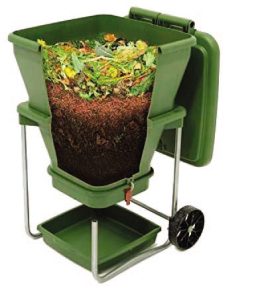 An easy way to bring energy efficiency to your home is through composting. Compost is organic matter that is used to enrich the soil surrounding your home, helping plants and flowers to grow. The biggest benefit is that compost comes from most food scraps and yard waste. Composting requires three simple ingredients: browns, greens, and water. This can be made up of a combination of many things, such as twigs, eggshells, coffee grounds, fruits, vegetables, grass clippings, and much more. Find a shady, dry area for your compost bin and begin adding your scraps, making sure to evenly distribute the materials. Adding some moisture as you go will increase the quality of your compost. So, the next time you are in the kitchen and have finished your eggs and coffee for breakfast, save those scraps.
An easy way to bring energy efficiency to your home is through composting. Compost is organic matter that is used to enrich the soil surrounding your home, helping plants and flowers to grow. The biggest benefit is that compost comes from most food scraps and yard waste. Composting requires three simple ingredients: browns, greens, and water. This can be made up of a combination of many things, such as twigs, eggshells, coffee grounds, fruits, vegetables, grass clippings, and much more. Find a shady, dry area for your compost bin and begin adding your scraps, making sure to evenly distribute the materials. Adding some moisture as you go will increase the quality of your compost. So, the next time you are in the kitchen and have finished your eggs and coffee for breakfast, save those scraps.
Making your home an energy efficient space is not only a great way to reduce your electricity bill, but it also provides numerous health and wellness benefits for you too. Among these are cleaner air to breathe in, homegrown soil for plants or flowers straight from your compost pile, and an overall more sustainable lifestyle. The choices you make to create a more energy efficient home not only affect you and your family, but they also have the power to help look after the well-being of our planet Earth. ![]()
Brooke Dixon
Home & Yard Magazine




